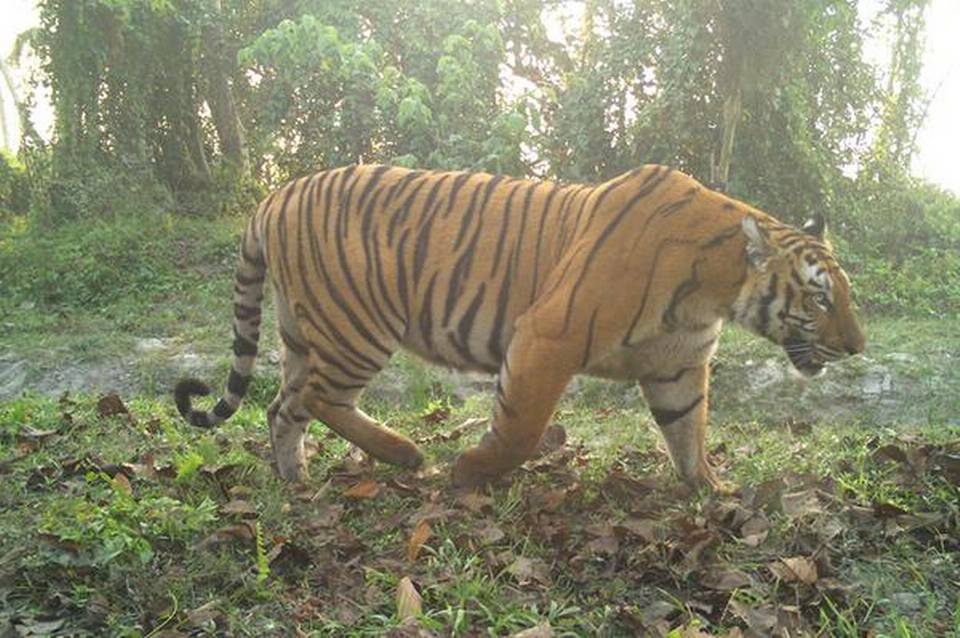Tiny Orang Roars On Tiger Density

Orang, the tiger reserve in Assam with the smallest core among 50 nationally protected areas, has presented wildlife scientists doing a census with a surprise: a high density of 28 big cats.
The count was revealed during phase IV of the all-India tiger estimation programme of the National Tiger Conservation Authority (NTCA).
Smallest core
Spread over Darrang and Sonitpur districts and notified in February 2016, Orang Tiger Reserve is the 49th in the country. It has the smallest core of 78.28 sq. km., and the cat density was revealed during a census done between January and March 2017. Kamlang Tiger Reserve in Arunachal is the 50th and latest to be notified.
Density is calculated based on the number of tigers per 100 sq. km.
“If we calculate density of tigers for 100 sq. km., it comes to 35.44. Thus, Orang has the highest density nationally,†Sunnydeo Choudhary, the reserve’s field director, said.
Estimates in 2013 had put the number of tigers here at 17.
Four males found
Mr. Choudhary said 24 camera trap images (17 females, four males and three as yet unidentified big cats) were taken during the exercise and the NTCA’s statistical model put the number of big cats in the reserve at 28.
Preliminary estimates of prey, which is important to sustain higher tiger numbers, revealed a good population of hog deer, wild boar and wild buffalo. Tigers also feed on cattle that stray into the core from settlements outside, officials said.
Describing the data as “very significant and interesting,†Kamal Azad, a biologist at NTCA’s regional office at Guwahati, said the presence of 30 to 35 cats in Orang should lead to a deeper study of tiger ecology in the landscape.
“Whatever we know about tiger ecology is from reserves such as Corbett and Kanha. It has not been studied in the Brahmaputra flood plains like Kaziranga and Orang,†Mr. Azad said.
A Wildlife Institute of India and NTCA report last year titled The Status of Tigers, Co-predators and Prey in India, said the density in Kaziranga National Park was 12.72 per 100 sq. km., followed by Jim Corbett National Park (11) in Uttarakhand and Bandipur National Park (10.28) in Karnataka.
Core-buffer division
Orang’s buffer area is 413.18 sq. km., but experts say the boundary between the core and buffer is sharp and not contiguous forest as in other reserves of Assam.
Agni Mitra, regional director of Wildlife Crime Control Bureau and tiger biologist said the tiger reserves from Uttarakhand to Nepal, parts of Bihar and north Bengal and in Assam in the ‘Terai arc landscape†sustains grassland and a good prey base.